Living in the Back Country, Karen Schulte [reading books for 7 year olds .TXT] 📗
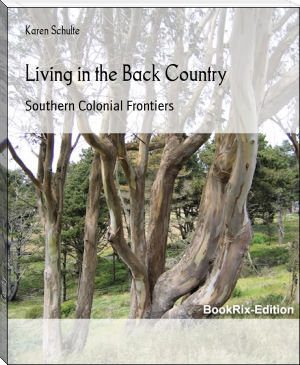
- Author: Karen Schulte
Book online «Living in the Back Country, Karen Schulte [reading books for 7 year olds .TXT] 📗». Author Karen Schulte
When we hear the word "frontier" we often picture the Old West with cowboys, covered wagons, and families eager to begin a new life. However, every colony during colonial times had a frontier, or thinly settled area by the wilderness. In the 1700's there were many frontier areas west of the Hudson River. However, the largest frontier region was the Southern "backcountry," stretching from Virginia to Georgia between the Appalachian Mountains and the Atlantic coastal region.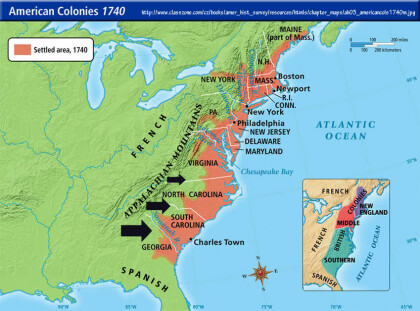
At first, very few people settled in the backcountry. Travel to and from the areas was difficult. There were few roads and the land was uneven and often covered with rocks. Thick forests of trees and lack of water transportation made moving supplies or goods extremely difficult.
So why did people choose to move into the backcountry? Some, especially single men, wanted adventure and freedom from the laws and rules that people in crowded areas had to follow. Indentured servants, freed from their 7 or more years of service, wanted to start a new life. Others were recent European immigrants who couldn’t afford to buy land so settled in unproven areas and claimed land as their own.
Most of the backcountry settlers in the 1700s, for example, were newly arrived Scotch-Irish and German families. The Scotch-Irish were people from Scotland who had settled in Ireland.
Pioneers generally had one thing in common though - they were poor. A pioneer family might start out along what was known as the "Great Wagon Trail" from Philadelphia to South Carolina with only a horse or a pair of oxen, a few cows, and some chickens. They would make their way south until they found a piece of land or area that they wished to settle. Then, they would clear an area and build a home.
Chapter 2 Daily Life
For their first few years, pioneer families worked hard just to stay alive. They grew a little corn, raised livestock, and depended on hunting and fishing to just stay alive. There were no supermarkets or online shopping outlets for them! Both women and men learned how to shoot accurately on the frontier and work in the fields.
People lived very simply in the backcountry. They cut trees to make their own log cabins. Homes usually had one room with a dirt floor and no windows (glass for the window would be difficult to transport as well as too expensive). During the day, light came through the open door (of course, that allowed insects and other critters to come in too!). At night, light came from the fireplace. Wood was burned in the fireplace to cook the food and to heat the house.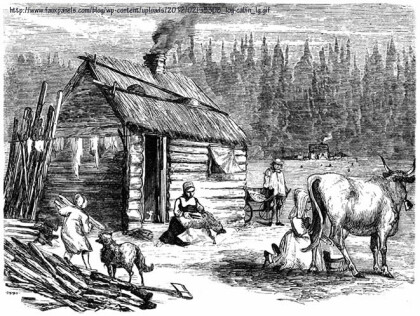
At night, the adults slept on blankets spread over a pile of dry leaves on the floor. The children slept in the loft. (The loft was a space between the ceiling and the roof. Children climbed to the loft by a ladder.)
Frontier life was very hard. Every day, settlers needed to hunt or find food. They needed to clear land for farming or buildings. They had to cut wood for the fire for cooking or heat; they had to water or till the ground for their vegetables or crops. Every task took time and strength to accomplish.
Settlers did learn to farm like the Native Americans. They learned to plant a variety of vegetables in the same mound of dirt so plants could shelter or help one another. For example, by planting corn, beans, and squash together, the corn acted like a stake for the beans while the squash vines spread out on the ground between the plants to keep the weeds from growing.
Usually, families on small farms had enough to eat. But they didn't have a balanced diet. Children were often sick and adults often died by the time they were 40. Most children died of childhood diseases and malnutrition (not getting the right foods to eat to be healthy). There were no doctors nearby to help if someone was sick or needed treatment for broken bones or injuries.
So frontier families had to be self-sufficient (needing no outside help to survive). They had to make almost everything they needed - cloth, butter, soap, candles, clothing, furniture, etc. and doctor themselves when they were sick.
Chapter 3 The DangersPioneers needed to protect themselves and their families from wild or curious animals. Imagine going out to the garden to pull weeds and finding a raccoon helping himself to lunch! Remember, settlers were moving into wilderness areas where the animals had lived for years without interference. Animals had no concept of “land rights” or “property.” Therefore, it was up to the settlers to protect themselves.
Because there was no electricity, there was no refrigeration. How did settlers preserve their food or protect it from spoiling? They learned to use many of the Native American methods of preserving food. They would smoke or dry it to keep it from spoiling. Meat, vegetables, and fruits could all be dried in the sun and stored for later use. If food was not preserved properly, eating it would cause sickness.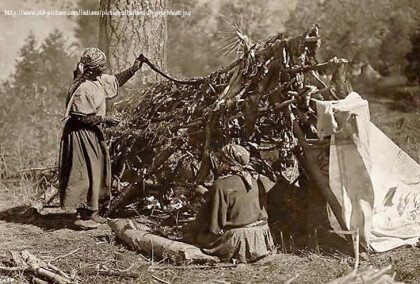
People living in the back country had to protect themselves from other people too. There was no law enforcement to help settle disputes. If a new person came into the area and tried to take what someone else owned or if fights broke out, those problems had to be solved among those involved. Would you be able to solve problems without someone helping you?
Native Americans in the area did not like settlers coming in and claiming land and using valuable resources. Added to the confusion was that Native Americans and settlers had different ways of doing things, different languages, and different ideas of ownership. Imagine someone coming into your home and claiming it as their own. Or sectioning off a piece of your yard and saying it is his. How would you feel about that? However, Native American warriors were eventually outnumbered by settlers. Every year, more white colonists arrived in the colonies. And, many Native Americans died from European diseases.
Chapter 4 Settlement of the Back CountryEventually, more and more settlers moved into the backcountry. Roads were created, trading posts and stores built, and towns created. Schools and churches were built that attracted more people. Eventually, the areas between the Atlantic coastal region and the Appalachian Mountains were settled and the “new” frontier became the land west of the mountains.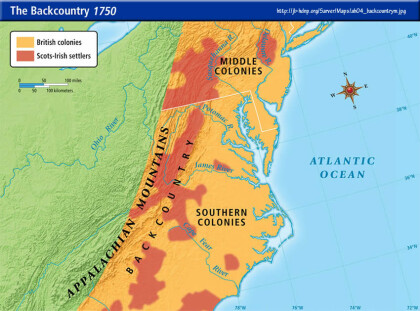
Living in the Backcountry. (n.d.). Retrieved from http://www.watertown.k12.ma.us/cunniff/americanhistorycentral/06lifeinbcolonies/Living_in_the.html
Nielsen, W. (2010). Westward expansion for summer school. Retrieved from http://educatedteacher.wordpress.com/2010/04/26/westward-expansion-a-la-summer-school/
Olmsted, F. (1860). A journey in the back country. Retrieved from https://archive.org/details/journeyinbackcou00olms
Imprint
Publication Date: 04-08-2014
All Rights Reserved





Comments (0)